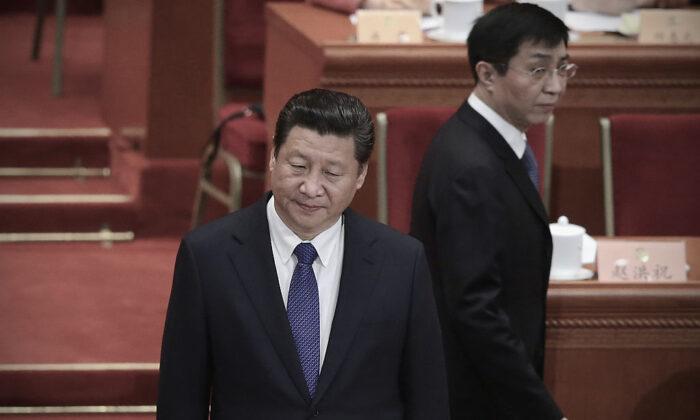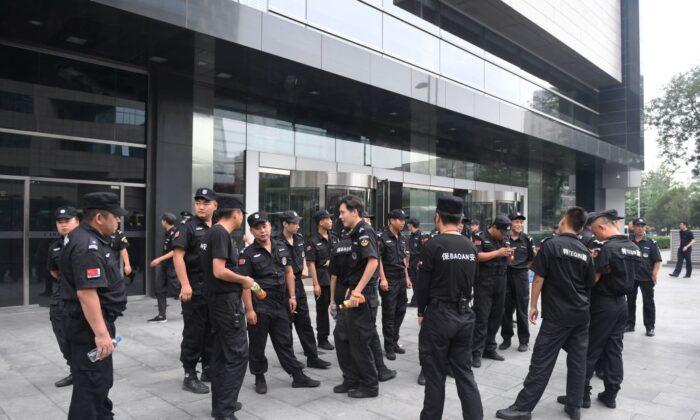WASHINGTON—The United States may have at one time been complacent about the Chinese regime’s influence in Southeast Asia, but that approach appears to have been overtaken by a more urgent, vigilant, and comprehensive stance on developments in that region, based on an Aug. 7 speech by a senior Pentagon official.
Southeast Asia should be seen in the context of the administration’s inclusive Indo-Pacific strategy, according to Randall Schriver, assistant secretary of defense for Asian and Pacific Security Affairs, who delivered the keynote speech at the event “An American Strategy for Southeast Asia” at the American Enterprise Institute.
“Our strategy is an affirmative and positive one, and it’s inclusive,“ Schriver said on Aug. 7. ”And while it is not aimed at any particular country, there should be little doubt that much of the Chinese behavior is demonstrating objectives that run counter to our objectives for a free and open Indo-Pacific. “
Schriver didn’t shy from sending a message to Beijing: “Chairman Xi Jinping and the CCP need to understand that while we seek cooperation where our interests align, we will confront and compete where we must.”
Schriver used the term “mortgaged future” to describe the situation of southeast Asian countries that have been trapped with debts via China’s “One Belt, One Road” initiative and emphasized how the United States will approach things differently.
While countries in the region don’t want to choose between the United States and China, after witnessing China’s military and economic statecraft, the militarization of the South China Sea, and attempts to operationalize unlawful sovereignty claims, they should realize that the choices are clear, he said
“The choices are not between one camp and another camp, but between two vastly different aspirations,” Schriver said. “The choices are really between partnership or domination, independence, and self-reliance or a mortgaged future, full sovereignty or coercion, international law and norms or irredentist claims and control.”
Schriver said that while China has a strategy, he is optimistic that the United States can “accomplish a major roll-back and change of behavior.”
While promising that “we’re not going to do what China does,” Schriver pointed out that China would also benefit from an open and free Pacific.
However, in the near term, the United States should work with its allies and partners, like Japan, Australia, and New Zealand, to quickly “blunt the erosion of individual sovereignty, blunt the coercion and influence operations.”
Schriver said that the United States should have a comprehensive strategy in southeast Asia, and have the countries in this region know that there are alternatives for them.
Countering in Every Domain
Joseph Bosco, former China country director of the office of the Secretary of Defense, said in an email that Schriver’s speech is a “masterful presentation of the Trump administration’s free and open Indo-Pacific strategy and the role of Southeast Asia as a central component of that strategy.”“He forcefully outlined the U.S. interests and values that are at stake in that region and the administration’s firm commitment to defend them,” said Bosco.
As to the growing backlash against “One Belt, One Road,” Bosco thinks that “like everything China’s communist government does, it is intended to serve its overall strategic plan to undermine American and Western interests globally.”
Slow to Understand
Wen Zhao, a Chinese commentator who runs a popular YouTube channel focused on China, said that the West was very slow to realize the Chinese Communist Party’s political ambition hidden behind “One Belt, One Road.” Some even hoped that Western companies could also benefit from it.Only after several years did they realize that what Beijing wanted to achieve was an exclusive sphere dominated only by China, with which the Communist Party could counter the West and export its domestic problems such as inflation and excess production capabilities, to create a favorable international environment for the Party’s long-term rule.
However, Wen Zhao said, after the West realized what was occurring, they made changes. The recent passage of the U. S. National Defense Authorization Act and the Trump administration’s Indo-Pacific strategy to counter “One Belt, One Road” are clear signs of strategic changes in the U.S. perspective on Communist China.
Economic analyst Qin Peng thinks that the United States failed in the past to do more to help Southeast Asian countries, while the CCP has offered what seemed to be a “one-stop” holistic solution to those countries’ desperate needs for funds, technology, and experience. If the United States really wants to achieve its goals, it needs to shoulder more responsibilities as a world leader, Qin said.




